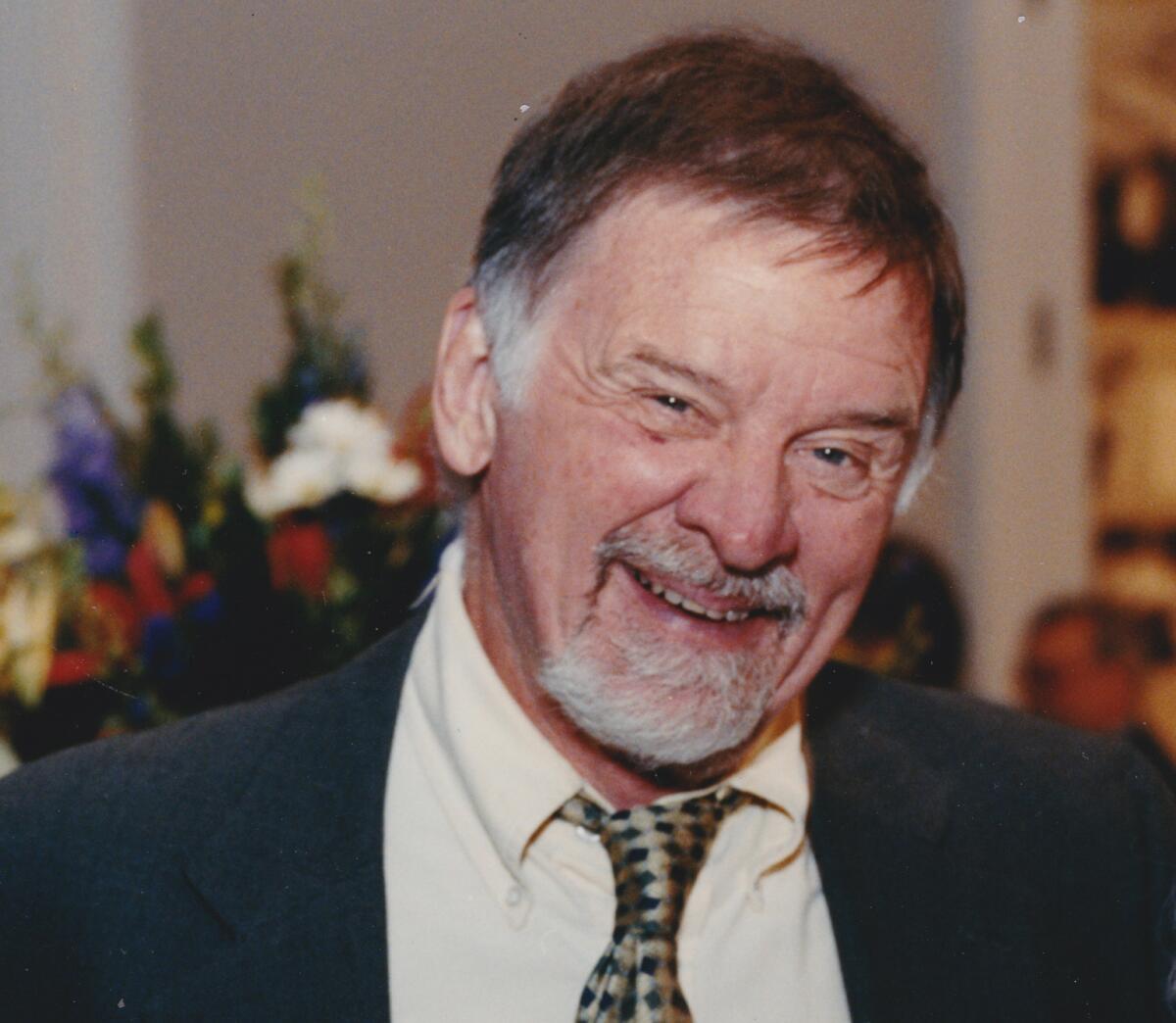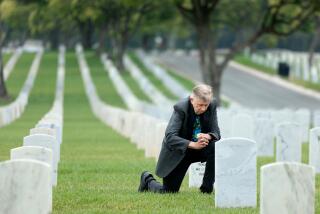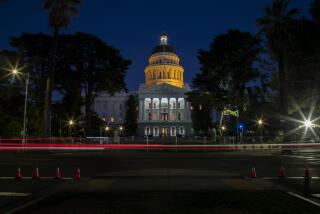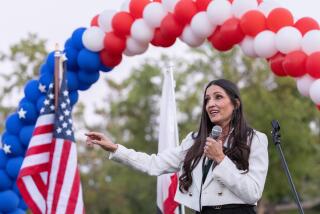Gary B. Nash, UCLA historian who shaped American history curriculum, dies at 88

Gary B. Nash, a leading UCLA scholar revered for his role in shaping K-12 American history curricula and admired for standing his ground — even in a public entanglement with the wife of a U.S. vice president — has died.
Nash died of colon cancer July 29 at age 88, his family said. Although he retired from UCLA in 1994, he wrote more than 30 history books and textbooks focused on American history, race and class, and continued to publish articles, essays and op-eds long afterward.
In an interview with the Economist about the recent politically driven outrage over the teachings of race in K-12 classrooms, Nash said the attempts to ban “uncomfortable” conversations will lead to less productive discussions.
“We want division of opinions for young people to grow up learning to express themselves, argue about it, think hard about it,” Nash said. “Patriotism is not just saluting the flag. It’s becoming responsible citizens who will take an active role in what’s going on around them.”
Nash had his own brush with conservative-led efforts to censor school curricula. As founding director of UCLA’s National Center for History in the Schools, where he worked for 20 years, he spearheaded efforts to diversify American history courses and championed the stories of nonwhite groups that were often excluded from history textbooks.
While at UCLA, he co-directed the National History Standards Project, which included four years’ worth of input from teachers, historians, parents and educators to propose a national history curriculum for U.S. students.
Nash and his colleagues were ensnared in a political firestorm after the standards were published. Lynne Cheney, wife of then-Vice President Dick Cheney, led a crusade alongside conservative critics, attacking the standards as “politicized history.”
Cheney complained that the standards, which were meant to help school officials recalibrate history courses, were not positive enough about the country’s achievements. She also said they did not pay enough attention to American figures including Confederate Gen. Robert E. Lee and inventor Thomas Edison.
Nash became the face of the project, recalled Ross Dunn, a longtime friend and colleague: “He was just doggedly determined to defend what we had done.”
Carla Pestana, who leads the UCLA History Department and was a graduate student under Nash, remembered how the controversy took over morning news shows. Nash would appear on TV, early Pacific time, looking like he’d just rolled out of bed compared with the pristine Cheney.
Still, Dunn said they sold more than 70,000 copies of the standards, which were used by state school leaders in designing curricula. Afterward, Nash, Dunn and their colleague Charlotte Crabtee co-wrote a book about the episode, titled “History on Trial: Culture Wars and the Teaching of the Past.” A Times review called the book “deeply informed, balanced and compelling.”
Nash wrote 33 books over the course of his career and more than 100 pieces for dozens of publications. He had three writing projects he was working on, writing and drafting up until his last days.
“He had this boundless energy,” Pestana said, and offered advice to young scholars who sought him out — which was often. He was so generous, Pestana said, that whenever she’s balancing requests, she reminds herself: “Gary would do this. Gary did this for me, and now I need to pass this along.”
He was also an optimist who believed that the U.S., with all its flaws and successes, could move toward a better society. His third book, “Red, White and Black: The Peoples of Early North America,” re-conceptualized how Native Americans, African Americans and colonizing settlers shaped the beginnings of the country.
“He really participated in that change of moving things toward thinking about diverse groups in society and the contributions of people other than the wealthiest and most politically powerful,” Pestana said.
Nash was born July 27, 1933, in a middle-class suburb of Philadelphia. His neighborhood was white and conservative, his daughter Brooke Nash said. He attended Princeton University on a scholarship and afterward served three years in the Navy. He returned to Princeton for his doctorate in history and in 1966 accepted a position at UCLA and moved his family west.
The move awakened his social activism, his family said. His wife of 40 years, Cynthia J. Shelton, said he helped integrate businesses, including banks and markets. She suspects his passion came from his years of studying history.
When UCLA tried to fire Angela Davis for being a member of the Communist Party USA, Nash led the Angela Davis Defense Committee, his daughter recalled. His efforts prompted a visit from the FBI to his home in the Pacific Palisades, she said. He also posed as a home buyer to help Black families who were being discriminated against, she said.
“He was kind of a radical,” Brooke Nash said. “He was not afraid to take action. He acted on his convictions all his life.”
When Gary Nash retired from the National Center for History in the Schools, his colleagues and former students filled a book with memories and gratitude. Among the tributes was a 2002 letter from Karl Holzheimer, a middle school teacher in Bellevue, Wash. In the letter, Holzheimer said his students were captivated by video supplements he used from a textbook that featured Nash.
“Within the first several weeks of school’s start, one of my 8th grade honors classes became — there is no other word for it — fascinated with your appearance on the American Nation videos,” Holzheimer wrote to Nash. “As they entered my classroom, they began to ask me if there was any ‘Nash’ today. They gave you the nickname ‘The Nashinator,’ a sort of history super hero.”
They even found a photo of Nash on UCLA’s website, printed out copies for the class and kept them in their notebooks, alongside their favorite pop stars, Holzheimer wrote.
“I can’t begin to explain this fascination,” he said. “I do believe their admiration of you is sincere. When I suggested that we sign a ‘thank you’ card for you they were quite enthusiastic.”
Nash is survived by his wife, four children, nine grandchildren, a sister and a brother.
More to Read
Sign up for Essential California
The most important California stories and recommendations in your inbox every morning.
You may occasionally receive promotional content from the Los Angeles Times.











